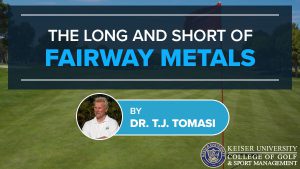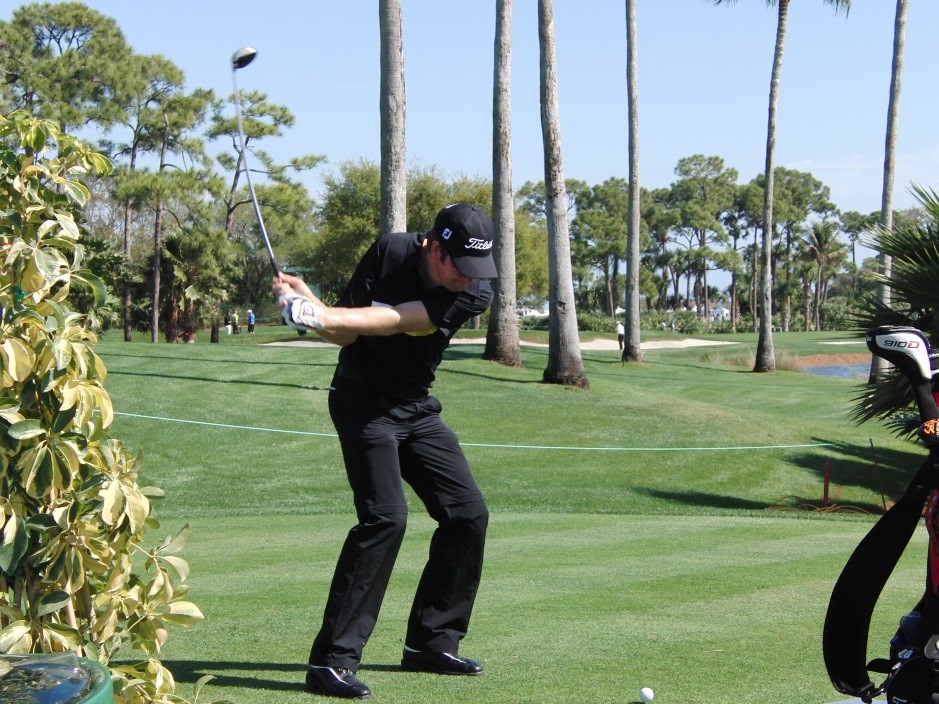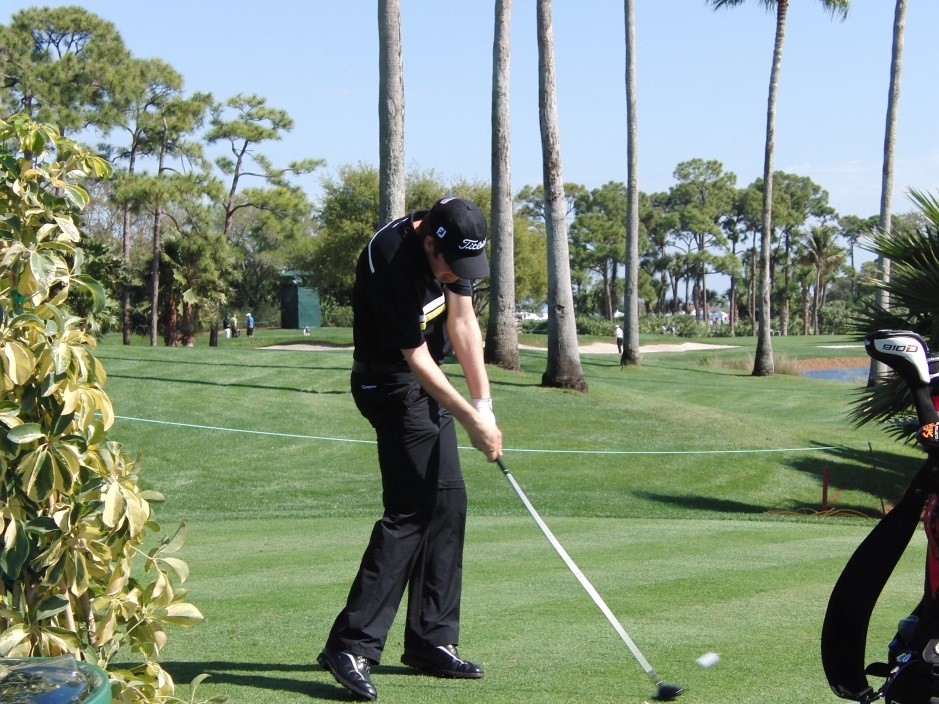The Long and Short of Fairway Metals

by Dr. T.J. Tomasi, Keiser University College of Golf Senior Faculty and Director of Research
Fairway metals, such as your 3-metal, are often the most difficult clubs in the bag to hit effectively because they have the worst of both worlds — large metal heads and not much loft. This dangerous duality leads to a visual image on your mental screen that says, “I can’t get under the ball with this low-lofted, big-headed club.”
Common Golf Swing Mistakes
This leads to all sorts of swing mistakes, but the two most common are: (1) hitting behind the ball and (2) hitting thin and topped shots.
Of course, the idea of getting under the ball is a common misconception. Your goal is not to get under the ball, but to cleanly hit the back of the ball with a down/forward blow. The good news is that both the fat and thin miss can be corrected by proper restoration of your swing radius.
The radius of your swing is the straight-line distance from your left shoulder to the clubhead. If you start with, say, an 80-inch radius at address, you should finish with 80 inches at impact; otherwise, you can’t make solid contact with the ball.
During your swing, this radius is “lost” as the wrist cock creates a 90-degree angle between the lead arm and the shaft of your golf club. Once this happens, the goal, as we saw in a previous article, is to restore the radius in time for impact.
How to Hit a Fairway Wood
In the correct swing, the radius is at its longest at both address and impact. If you’re topping or catching your fairway metals thin, you’re returning to impact with a “short” left arm. Good fairway metal players have a long left arm at impact, meaning that the club is a straight-line extension of the arm. If the arm ‘gets long’ too early, you’ll suffer the bone-jarring fat shot.
This drill will give you the feel of the on-time long left arm: Start your swing from the impact position shown in the second photo below. Begin your backswing by replanting your right heel on the ground so you’ll rebound onto your right side. Let momentum guide you to the top of the backswing, then continue your swing to the finish.
This will give you the feel of restoring the radius as you shallow out the shape of your swing arc — a must for fairway metals. Think “long arm to short arm to long arm.”

This is the 90-degree angle that must be restored to straight by impact. At this point, the radius of the swing has changed due to his cocked wrists, and power is stored in his “short” left arm.

At impact, the full radius has been restored, and the left arm is long again, releasing pent-up power.
If you’d like to study with Dr. Tomasi and other PGA Master Professionals, contact The College of Golf today.














